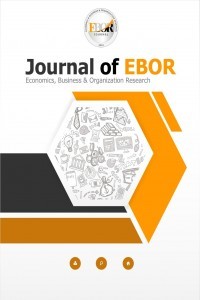AN INVESTIGATION INTO THE BARRIERS AFFECTING THE ADOPTION OF ISO 9001:2015 CERTIFICATION IN ARABIC COUNTRIES: A CASE STUDY OF LIBYAN SERVICE AND MANUFACTURING INDUSTRIES (LSMI)
AN INVESTIGATION INTO THE BARRIERS AFFECTING THE ADOPTION OF ISO 9001:2015 CERTIFICATION IN ARABIC COUNTRIES: A CASE STUDY OF LIBYAN SERVICE AND MANUFACTURING INDUSTRIES (LSMI)
___
- Aamer, A. M., Al-Awlaqi, M. A., & Mandahawi, N. (2020). Insights into the reasons behind the limited implementation of ISO 9001 certification: empirical evidence from Yemen. The TQM Journal.
- A'aqoulah, A., Kuyini, A. B. & Ajlouni, M. T. (2016). Addressing Quality Management System Obstacles in Jordanian Hospitals. International Business Research, 9(9), 34-40.
- Al-Awlaqi, M.A. & Aamer, A.M. (2019). “Financial and social efficiency in the Yemen microfinance institutions: a Hicks–Moorsteen TFP index analysis”, International Journal of Islamic and Middle Eastern Finance and Management, Vol. 12 No. 3, pp. 322-345.
- Al-Khalifa, A.K.N. & Aspinwall, E.M. (2000). The development of total quality management in Qatar. The TQM Magazine, 12(3),194-204.
- Al-Refaie, A., Ghnaimat, O. & Li, M. (2012). Effects of ISO 9001 Certification and KAAE on Performance of Jordanian Firms. Jordan Journal of Mechanical and Industrial Engineering, 6(1), 45-53.
- Al-Zamany, Y., Hoddell, S. E. J. & Savage, B. M. (2002). 'Understanding the difficulties of implementing quality management in Yemen', Tqm Magazine, 14 (4), pp. 240-247.
- Ashrafi, R. (2008). “A review of ISO 9001:2000 quality management practices in Oman”, International Journal of Productivity and Quality Management, 3 (1), pp.74-105.
- Ashrafi, R. & Bashir, H.A. (2011). “Implementation of quality management in organisations operating in the Sultanate of Oman: ISO 9001:2000 vs. non-ISO 9001:2000 certified organisations”, International Journal of Productivity and Quality Management, 7 (2), pp.183-201.
- Bounabri, N., El Oumri, A. A., Saad, E., Zerrouk, L. & Ibnlfassi, A. (2018). Barriers to ISO 9001 implementation in Moroccan organizations: Empirical study. Journal of Industrial Engineering and Management (JIEM), 11(1), 34-56.
- Cianfrani, C.A., Tsiakals, J.J. & West, J.E. (2009). ISO 9001: 2008 Explained. 3rd Edition, ASQ Quality Press, Milwaukee.
- Curry, A., & Kadasah, N. (2002). The yin and yang of quality systems evaluation. Managerial Auditing Journal, 17(7), 424-429. Elsmuai, T., & McCollin, C. (2013). Development of Accreditation in the Developing Countries. International Proceedings of Economics Development and Research, 60, 151. Hamadameen, B. N., & Wali, K. I. (2019). An Investigation the Current Situation of implementing ISO 9001 Quality Management System in Construction Sector in Erbil City-Iraq. Sulaimania Journal for Engineering Sciences, 6(4), 57-70.
- Hesham, A., & Magd, E. (2007). ISO 9001:2000 Certification Experiences in Egyptian Manufacturing Sector: Perceptions and Perspectives. International Journal of Quality & Reliability Management, 25(2), 173-200.
- Hill, N Self, B., & Roche, G. (2002). Customer satisfaction measurement for ISO 9000: 2000. 1st published,Butterworth Heinemann.
- Hussein, B., Abou-Nassif, S., Aridi, M., Chamas, M., & Khachfe, H. (2017). Challenges and prospects of implementing ISO 9001: 2015 in Lebanese higher education institutions. J. Resour. Dev. Manage, 33, 41-51.
- Ismail-Salaheldin, S. (2003). The implementation of TQM strategy in Egypt: A field-force analysis. The TQM Magazine, 15(4),266-274. https://doi.org/10.1108/09544780310486173.
- ISO 9001 Survey 2019, Available at : https://www.iso.org/the-iso-survey.html. (Accessed November 2020).
- Jayasundara, A. J. M. D. C., & Rajini, P. A. D. (2014). Enablers and barriers of implementing ISO 9001-Quality Management System (QMS) in the service sector in Sri Lanka. Proceedings of the Peradenlya Univ. International Research Sessions, Sri Lanka, 14.
- King, N., & Brooks, J. (2017). Doing template analysis: A guide to the main components and procedures. Template analysis for business and management students, 25-46.
- King, N. (2009). “Template analysis website”, Available at: http://www.hud.ac.uk/hhs/research/template_analysis/index.htm. (Accessed November 2020).
- Kumar, D. A., & Balakrishnan, V. (2011). A study on ISO 9001 Quality Management System Certifications Reasons behind the failure of ISO certified Organizations. Global Journal of Management and Business Research, 11(9).
- Magd, H. A. (2006). An investigation of ISO 9000 adoption in Saudi Arabia. Managerial Auditing Journal.
- Mehfooz, N., & Lodhi, M.S. (2015). Implementation barrier of ISO 9001 with in service and manufacturing organizations in Pakistan.
- Miguel Ciravegna Fonseca, L., Domingues, J. P., Baylina, P., & Harder, D. (2019). ISO 9001: 2015 adoption: A multi-country empirical research. Journal of Industrial Engineering and Management, 12(1), 27-50.
- Mosadeghrad, A.M. (2014). Factors influencing healthcare service quality. International Journal of Health Policy and Management, 3(2), 77-89.
- Purwanto, A., Putri, R. S., Ahmad, A. H., Asbari, M., Bernarto, I., Santoso, P. B., & Sihite, O. B. (2020). The effect of implementation integrated management system ISO 9001, ISO 14001, ISO 22000 and ISO 45001 on Indonesian food industries performance. TEST Engineering & Management, 82, 14069.
- Rybski, C., Jochem, R., & Homma, L. (2017). Empirical study on status of preparation for ISO 9001: 2015. Total Quality Management & Business Excellence, 28(9-10), 1076-1089.
- Sampaio. P, Saraiva. P, & Rodrigues. A.G. (2009). ISO 9001 certification research: Questions, answers and approaches. International Journal of Quality & Reliability Management, 26(1), 38-58.
- Talib, F., & Rahman, Z. (2015). Identification and prioritization of barriers to total quality management implementation in service industry: an analytic hierarchy process approach. The TQM Journal, 27(5), 591-615.
- Tricker, R. (2016). ISO 9001:2015 in Brief. New York: Routledge.
- Zaramdini, W. (2007). “An empirical study of the motives and benefits of ISO 9000 certification: the UAE experience”, International Journal of Quality and Reliability Management, Vol. 24 No. 5, pp. 472-491.
- Yayın Aralığı: Yılda 2 Sayı
- Başlangıç: 2019
- Yayıncı: Mehmet GÖKERİK
MEASURING EFFICIENCY OF WORKING CAPITAL MANAGEMENT: INDEX METHOD
Hayda Abu HASAN, Sathiswaran UTHAMAPUTHRAN
IS EMBEDDEDNESS A KEY FEATURE OF BUSINESS ECOSYSTEMS? THE CASE OF CRAFT BREWERIES IN ITALY
EVIDENCE OF THE REBOUND EFFECT ON CLASSIC AND SMART TOURISM
GREEN SUKUK: INDONESIAN YOUTH INVESTMENT PROSPECTS FOR ENVIRONMENTAL SUSTAINABILITY
Syahrul MUNIR, Umi MASRURO, Ahmad FAWAIQ, Santi MERLINDA
JOB SATISFACTION AND CREATIVITY – THE CASE OF A TRANSITION COUNTRY
Aelita MANI, Nives LAMCE, Gentian HOXHALLI
EXPLORING THE COMMUNICATION EXPECTATIONS OF HEALTH CARE WORKERS: EMPIRICAL EVIDENCE FROM TURKEY
Charitha Harshani PERERA, Rajkishore NAYAK, Long Thang Van NGUYEN
